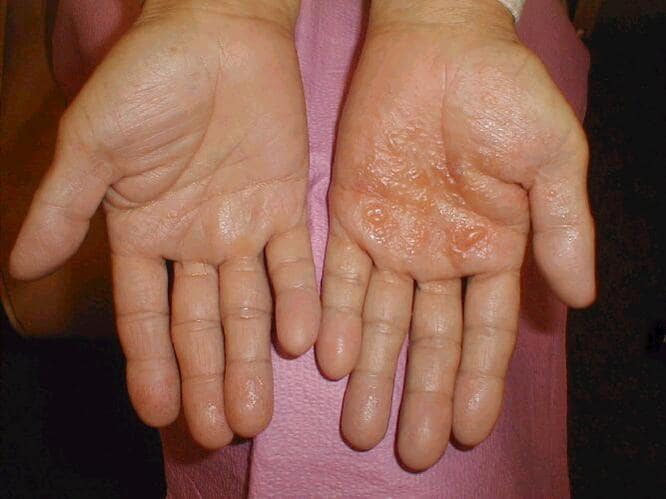Summer and warm weather bring oh so much fun! Everyone wants to catch up, vacation and
spend as much time outside as possible.
For some though, the warm weather causes the recurrence of itchy water
filled blisters appearing on their hands and feet. These blisters look
like grains of tapioca coming out of the skin. The itch can be intense!
And can cause many sleep disturbance, social embarrassment and disruption. Symptoms start with intense burning and itching on the hands and feet.
Scratching will cause the appearance of water blisters underneath the
skin. Skin can be red and wet appearing. Symptoms without treatment last about 3-4
weeks and then reoccur.
What Are These Itchy Water
Filled Blisters?
· For most these water
filled blisters are caused by a form of eczema called dyshidrotic eczema.
· Other causes may be
from fungal infection and other autoimmune diseases and should be evaluated by
an allergist or other physician.

Taken from http://emedicine.medscape.com/article/1122527-overview

Taken from http://images.medicinenet.com/images/slideshow/eczema-atopic-dermatitis-s13-photo-of-dyshidrotic-eczema.jpg
Who's Affected by Dyshidrotic Eczema?
· About 50% of persons with dyshidrotic eczema will have a history of other allergic diseases like eczema, and allergies in the nose, eyes, or/or asthma
· It affects men and women equally.
· First episodes typically start anywhere from the 20’s to 40’s and reoccur each spring/summer
What
Causes Dyshidrotic Eczema?
· Causes are varied:
o
dysfunction
of the sweat gland on the hands and feet
o
chemical
allergy to metals (nickel allergy, cobalt allergy), and products like Balsam of Peru, preservatives and sunscreens we use just
during the warmer months
o
Exposure
to sun can trigger the onset of symptoms.
o
Stress
can also bring out blisters.
Is
There Treatment for Dyshidrotic Eczema?
·
Treatment depends on the cause of symptoms.
o
Evaluation for chemical allergy and/or other
environmental triggers should be done by an Allergist
o
Evaluation for possible food allergy by an
Allergist
o
Evaluation for potential fungal and/or bacterial
infection
·
Avoidance of offending agent is key in
prevent. Topical use of corticosteroids,
topical antibiotics, and/or UV light therapy may be helpful in prevention.
Do you need help with your dyshidrotic eczema? Please book book an appointment with Dr. Jennifer Collins for specific advice

No comments:
Post a Comment